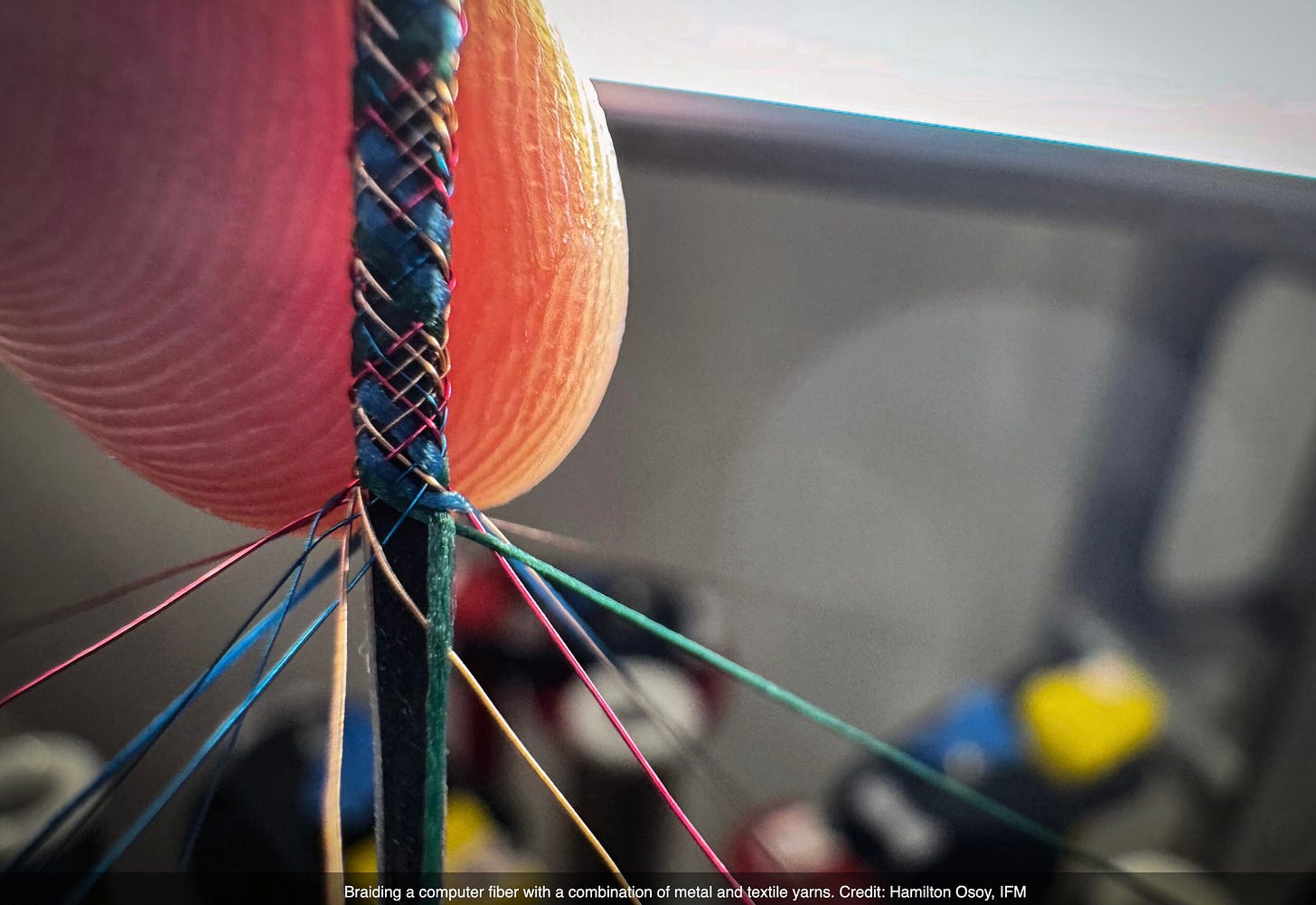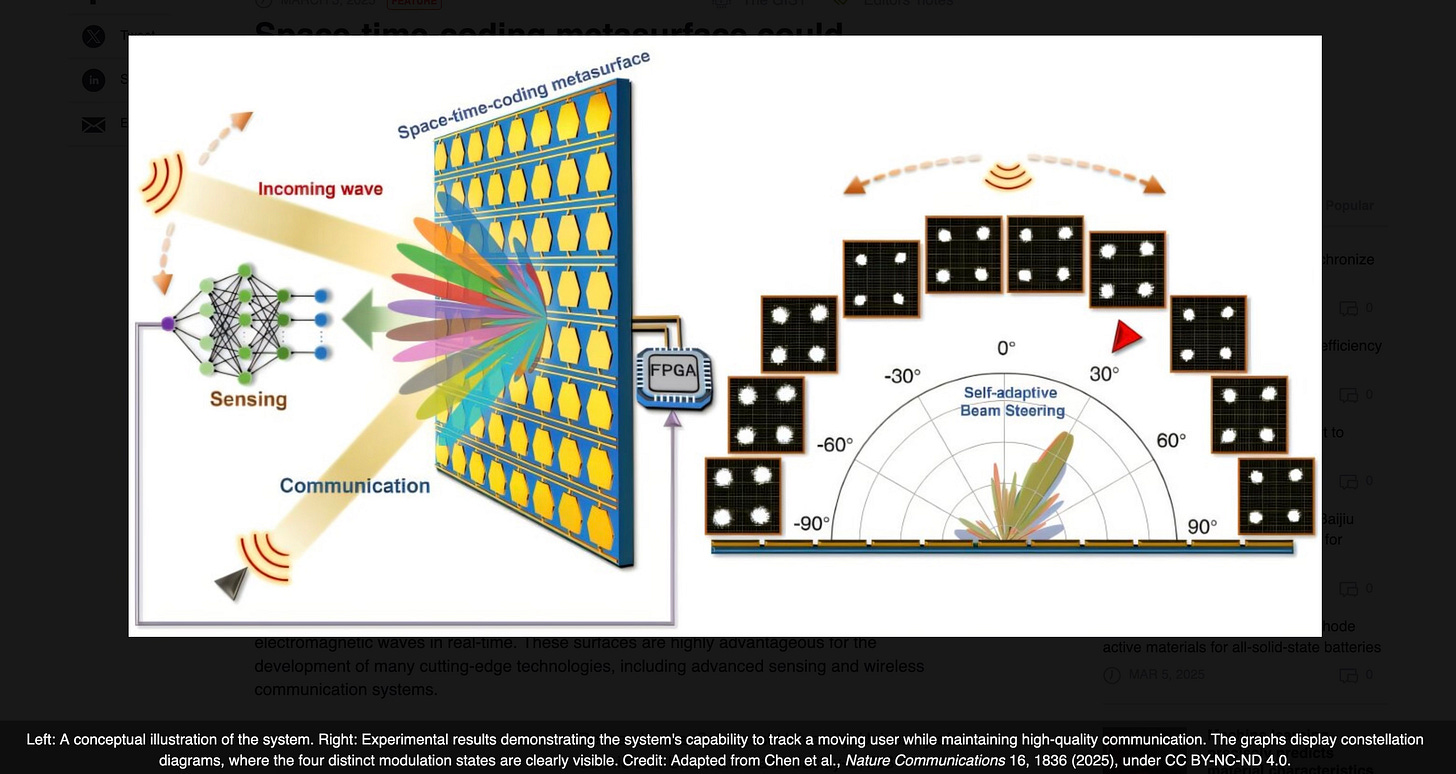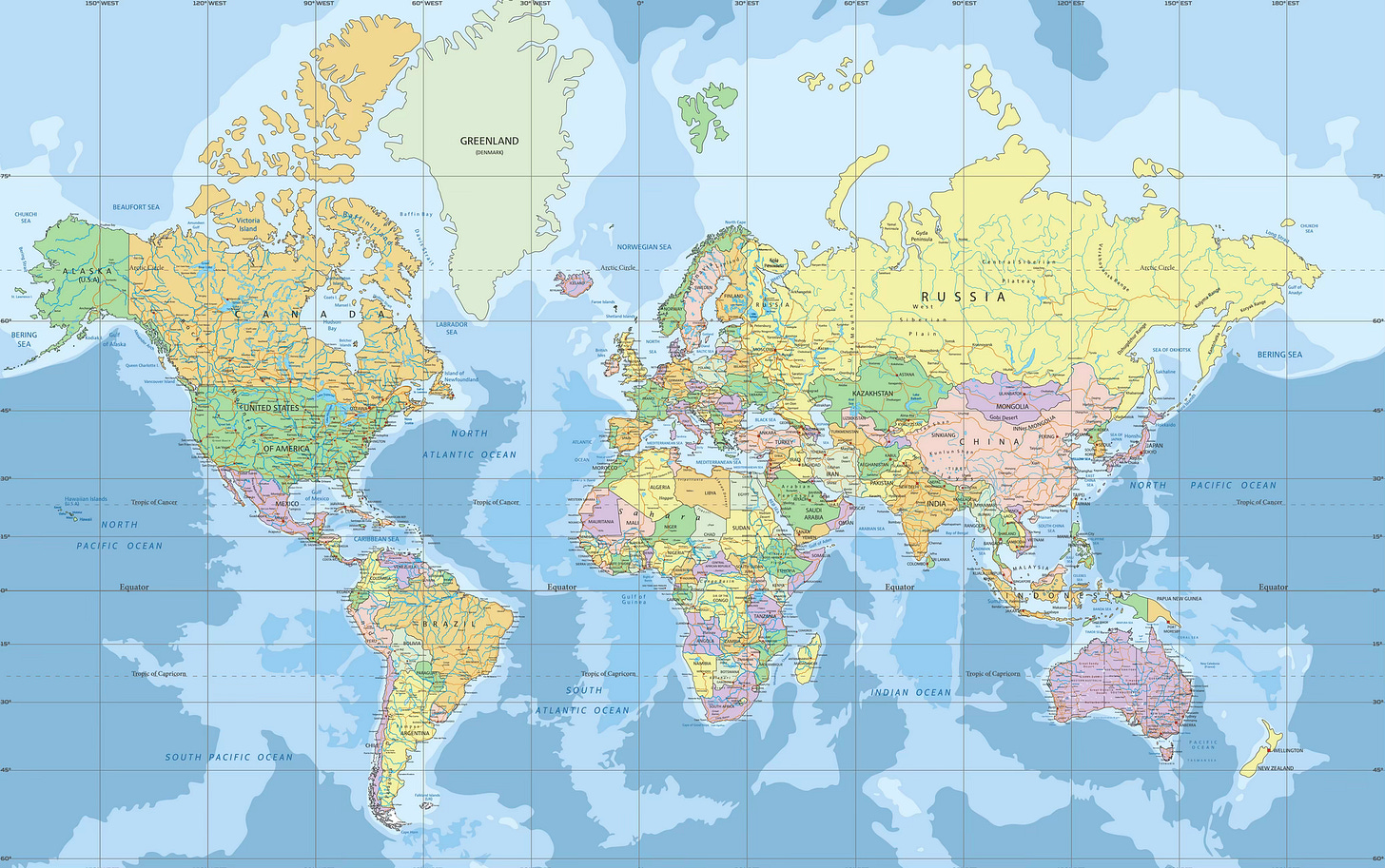This week we discover a new method of purifying seawater to make it suitable for drinking. We investigate a Fiber Computer that is now being tested as part of a winter jacket for the US Army and Navy in the arctic circle. We examine another breakthrough that will be important for the next generation of wireless phone networks or 6G. Finally we play with a website that allows us to superimpose the outline of one country on another to determine the True Size of each country.
Seawater Purification
A team from Nagoya University in Japan in collaboration with a team from Zhejiang Ocean University in China have discovered a new technique for improving the electrodes that convert seawater into potable water using oxygen. Drinkable water is a huge issue for many populations around the world.
The new technique works by removing ions from seawater using electrodes. This leaves drinkable water. Ions from the seawater are attracted to the electrode surface and the charged ions are stored in an electric double layer formed there, The ions can be removed and used for industrial processes (e.g. sodium).
The most commonly used electrodes are porous carbonaceous electrodes. These electrodes use a carbon and nitrogen base with pores to create a high surface area for extracting ions. By doping the electrodes with oxygen, the materials structure is altered and performance is improved. The oxygen improved the affinity of the nitrogen present. Additionally the oxygen doped electrodes have an even greater surface area enhancing purification efficiency.
The team believes that the greater efficiency will further reduce the cost of purifying water making the technology more accessible to poorer coastal communities facing freshwater challenges.
Fiber Computers
We have talked extensively about wearable computers and the information that they may be able to provide to help in monitor our health. Better information allows us to intervene early when problems occur. Now a team at MIT have developed an autonomous programmable computer in the form of an elastic fiber. This fiber could monitor heath conditions and physical activity.
The clothing that was developed is comfortable and machine washable. The fibers are nearly imperceptible to the wearer. Other wearables are usually a single point system on the chest, wrist or finger. This fabric has the advantage of being in contact with large areas of the human body that are close to vital organs.
The fiber contains a series of micro devices, sensors, a microcontroller, digital memory, Bluetooth modules, optical communications and a battery. All in a single fibre.
The team added four fiber computers to a top and a pair of leggings. The fibers ran along each limb. Each fiber ran an independent machine learning model that was trained to recognize the exercises performed by the wearer (with an accuracy of about 70%). When the fibers were allowed to communicate with each other the accuracy increased to 95%.
The US Army and Navy will conduct a month long trial in the Arctic covering 1,000 kilometers in average temperatures of -40C. The goal is to provide real time information on the health and activity of the individuals involved in the trial in order to prevent injury.
The future is fiber computers that run apps to obtain health care and safety services built into everyday apparel.
6G
The next generation of phone networks is due around 2030 although Samsung claims they will have a network ready to roll out in 2028. That is not all that far away for a technology that still needs a lot to be invented.
A team at Southeast University, University of Sannio and University Paris- Saclay may have taken us one step closer to 6G. They have developed a space and time coding meta surface that can simultaneously support both sensing and wireless communication. This is known as a programmable meta surface.
6G devices need to be able to provide ultrafast speeds, near zero latency and a vast range of new applications. The rise of intelligent systems will increase the need and demand for speed and bandwidth. Future networks will need to transmit data and interact with their surroundings.
This new meta surface does more than reflect wireless signals. The surface actively manipulates the signals that it reflects. Each element contains diodes that can be switched on and off, dynamically shaping the propagation of electromagnetic waves.
The surface supports both the original frequency of the signal that it interacts with and additional harmonic frequencies that can be controlled with high precision. The original signal is used to provide high quality communication, the controllable harmonics support the real time sensing of the surrounding environment and the detection of signals of interest via algorithms.
The signal will remain stable whilst sensing movement, detection of objects and adapting to changes in real time. This type of signal could be used in smart cities, home security, industrial robotics and autonomous vehicles. The next step is to integrate an AI at the system level allowing the surface to make complex real time decisions. Who knows what applications will emerge.
What is the True Size
We all know that the Mercator Projection of countries onto a flat surface in order to display the countries of the world is skewed. Countries nearer the poles appear to be much larger than they really are.
A new website shows the true size of countries. You can enter a country and then place its’ outline over different parts of the world to see the actual size at that latitude. I have started with the US, Australia and Greenland and placed them over Africa, Europe and Brazil respectively. Try it out here. It is fun to see just how small some countries actually and how massive others are.
Paying it Forward
If you have a start-up or know of a start-up that has a product ready for market please let me know. I would be happy to have a look and feature the startup in this newsletter. Also if any startups need introductions please get in touch and I will help where I can.
If you have any questions or comments please comment below.
I would also appreciate it if you could forward this newsletter to anyone that you think might be interested or provide a recommendation on Substack.






